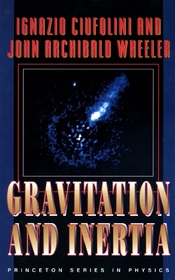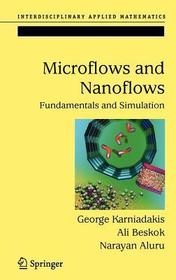
Transport Properties and Potential Energy Models for Monatomic Gases
Sorozatcím: International Series of Monographs on Physics; 174;
-
10% KEDVEZMÉNY?
- A kedvezmény csak az 'Értesítés a kedvenc témákról' hírlevelünk címzettjeinek rendeléseire érvényes.
- Kiadói listaár GBP 100.00
-
47 775 Ft (45 500 Ft + 5% áfa)
Az ár azért becsült, mert a rendelés pillanatában nem lehet pontosan tudni, hogy a beérkezéskor milyen lesz a forint árfolyama az adott termék eredeti devizájához képest. Ha a forint romlana, kissé többet, ha javulna, kissé kevesebbet kell majd fizetnie.
- Kedvezmény(ek) 10% (cc. 4 778 Ft off)
- Kedvezményes ár 42 998 Ft (40 950 Ft + 5% áfa)
Iratkozzon fel most és részesüljön kedvezőbb árainkból!
Feliratkozom
47 775 Ft

Beszerezhetőség
Becsült beszerzési idő: A Prosperónál jelenleg nincsen raktáron, de a kiadónál igen. Beszerzés kb. 3-5 hét..
A Prosperónál jelenleg nincsen raktáron.
Why don't you give exact delivery time?
A beszerzés időigényét az eddigi tapasztalatokra alapozva adjuk meg. Azért becsült, mert a terméket külföldről hozzuk be, így a kiadó kiszolgálásának pillanatnyi gyorsaságától is függ. A megadottnál gyorsabb és lassabb szállítás is elképzelhető, de mindent megteszünk, hogy Ön a lehető leghamarabb jusson hozzá a termékhez.
A termék adatai:
- Kiadó OUP Oxford
- Megjelenés dátuma 2024. január 4.
- ISBN 9780198888253
- Kötéstípus Keménykötés
- Terjedelem352 oldal
- Méret 250x175x22 mm
- Súly 820 g
- Nyelv angol
- Illusztrációk 31 line illustrations 526
Kategóriák
Rövid leírás:
This book offers extensive knowledge and practical guidance for readers working on non-equilibrium phenomena. The book can also serve as supplementary reference for a course of non-equilibrium statistical mechanics.
TöbbHosszú leírás:
The first two chapters of this book are an update and outgrowth of the monograph Nonequilibrium Phenomena in Polyatomic Gases published by OUP in 1990, and a response to considerable improvements in the experimental determination of the transport properties of dilute gases that have taken place during the past 30 years. The experimental determination has improved sufficiently that it has become necessary to carry out calculations at the level of the second Chapman-Cowling approximation in order to give computed results that lie within the current experimental uncertainties now being reported.
Chapter 3 is devoted to realistic interatomic potential energy functions, and begins with a discussion of the need for more accurate representations of these functions. Direct inversion of both microscopic data (spectroscopic transition frequencies and atomic beam scattering) and bulk property data (pressure and acoustic second virial coefficients, transport properties) are discussed in detail. The quantum chemical ab initio determination of binary atomic interaction energies and their analytical representation are discussed, followed by a detailed considerations of the interaction energies between pairs of noble gas atoms. Chapter 4 is concerned with connections between theory and experiment, including a detailed discussion of pure noble gases and their binary mixtures. Chapter 5 focuses on how to obtain the spectroscopic and thermophysical properties of a specific molecular system theoretically step by step, and provides a reference for the specific theoretical calculation work.
Tartalomjegyzék:
THE MONATOMIC BOLTZMANN EQUATION
The Boltzmann equation for dilute monatomic gases
Equations of change and collisional invariants
Entropy production
The equilibrium state
Linearization of the Boltzmann equation
The Boltzmann equations for mixtures
SOLUTIONS OF THE BOLTZMANN EQUATION
Chapman-Enskog solution for pure monatomic gases
Chapman-Enskog solution for binary mixtures
Matrix approximations for the inverse collision operator
The transport coefficients
Effective cross sections
Dynamical models for binary atomic interactions
The moment method
Kinetic models
REALISTIC INTERATOMIC POTENTIAL ENERGY FUNCTIONS
The need for realistic potential energy functions
The Mie/Lennard-Jones potential energy functions
Hartree-Fock plus damped dispersion semi-empirical models
Exchange-coulomb semi-empirical models
Modern empirical multiproperty-fit potential energy functions
Direct inversions of experimental data
Ab initio calculation of potential energy functions
Interactions between pairs of ground-term noble gas atoms
Interactions involving open-shell atoms
COMPARISON BETWEEN THEORY AND EXPERIMENT
Comparison between theory and experiment
Correlation concept
Binary mixtures of noble gases
FROM AB INITIO CALCULATIONS TO SPECTROSCOPIC AND THERMOPHYSICAL PROPERTIES
Ab initio calculations
Fitting of analytic potential energy functions
Spectroscopic properties
Thermophysical properties
MATHEMATICAL APPENDICES
Maxwellian averages
Special functions
Vectors and tensors
Spherical harmonics and spherical tensors
References
Index








